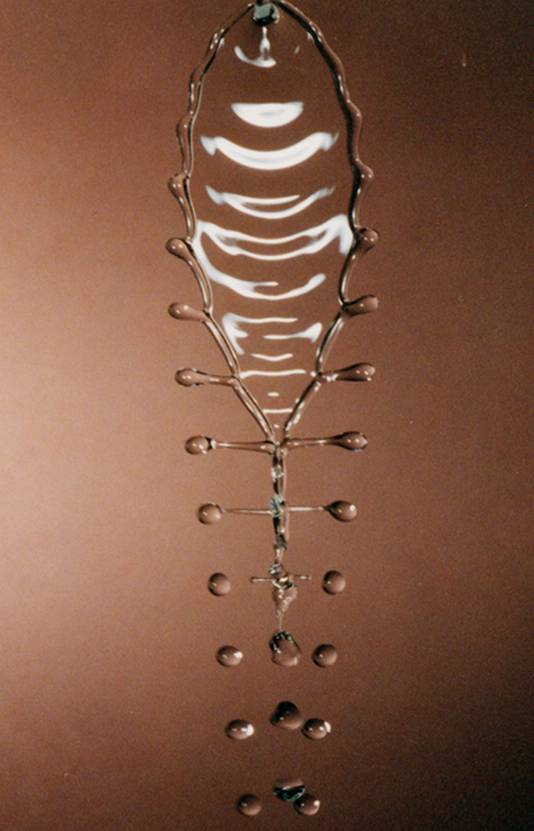Engineering School Modular Program for Fluid Mechanics
|
 Prof. Chiang C. Mei - Civil & Environmental Engineering
Prof. Chiang C. Mei - Civil & Environmental Engineering
Fluid Dynamics plays a central role in many branches of engineering and science. It is concerned with the motion of liquids and gases and their interactions with other materials and objects. Knowledge of such motions is important for engineering design of land vehicles, ships and aircrafts as well as many other mechanical and industrial processes. Fluid motion in air and in water affects our environment, while fluid transport and mixing are responsible for biological processes in nature and in the human body. As a result, fluid mechanics courses are offered in almost every Engineering department. This not only results in redundancy but it also in hinders interdisciplinary fertilization
A group of faculty across the School of Engineering are developing a new teaching paradigm for fluid mechanics as a web-based program at the first-year graduate level. The program will consist of several modules representing important topics in fluid mechanics. These modules can be integrated to form coherent courses to suit the educational purpose of individual students in different departments of the School of Engineering. These courses can serve both as a preparation for deeper immersion in the student's own special fields and as an intellectual enrichment for life-long learning. The completed program can be used as the foundation upon which more advanced and specialized modules will be built, thus extending its influence to the field of fluid mechanics as a whole. The projects can also serve as a model for similar integration of subjects in Engineering schools such as solid mechanics, control systems, thermal physics and engineering, and probabilistic methods.
Each pedagogical module will deal with cover about the length of a chapter in a printed book. The topic might be a fundamental law (e.g. mass conservation, equation of motion, or momentum theorem), a particular class of physical phenomena in fluids (e.g., surface tension effects, flow around obstacles, or water waves), or a particular type of engineering application (e.g., hydraulics and fluid machinery, transport of contaminants, aerodynamics of wings, resistance of ships, etc.).
Specific modules currently under development include:
Each module will consist of:
Easy access to an archive of photos and video segments of "archetypical" fluid flow phenomena and examples of applications is an essential part of the modules The video archive will be built upon available materials by ourselves and by others. The sample photo on this page of an intriguing instability shows the fish-bone pattern on a thin fluid film.
Interactive exercise problems are the second essential part of the program. These exercises will be designed so that the students first develop their own theory or model for a given problem, and then compare their theory with experimental data. For some problems the students will be able to access full solutions as examples, for others they will be able to access hints, and for still others only the final theoretical answers, or, where available, experimental data. The problems will include examples where available theoretical solutions are imperfect or fail, as well as where they succeed.
Computational simulations are the third essential part of the program in order to provide images illustrating difficult concepts or phenomena, and to permit quantitative examination of the physics as a function of the important parameters.
On-line feedback, comments, and discussion from all students and alumni are encouraged on all aspects of course materials and the methods of instruction. Collaboration with other institutions will be enlisted as the program proceeds. We expect that the program will be in a state of perpetual renewal and expansion, and will provide a life-long platform for interaction between students, alumni, colleagues in academia and industries, and MIT.
Building on the modules and variety of content that are being developed, our objective is to understand, develop and test methodologies for interactive custom and dynamic delivery of this material within a learning environment. Some characteristics of this delivery are richness of content/knowledge, needs anticipation, customization, dynamic delivery, and continual learning assessment.
Customized learning toolsThe learning tool must be customized to the individual student in terms of the learning outcomes desired (by the student or a specific instructor) and by the student's interests, preparation and skill levels, and learning styles. The assessment of these, and hence the delivery itself, are dynamically adjusted based on learning assessments which are part of the overall process.
Our present approach to customization is based on the following strategy: divide the content into small elements ("atoms"); indexing of these atoms; develop learner profiles/attributes; and select atoms sets based on these. We have begun implementing and testing rudiments of these ideas in the classroom in a a first-year graduate course in marine hydrodynamics and plans to develop software to demonstrate and test this approach are being discussed.